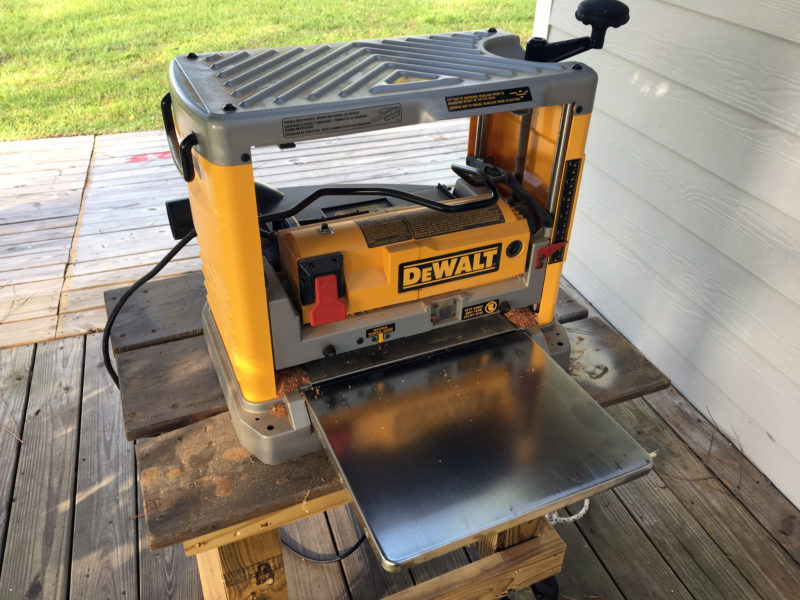 Photo and video by the author
Photo and video by the authorThe planer has a broad paddle switch for quickly cutting the power. Just above the feed opening is a gauge that shows how much wood is being removed.
Back in 2016, Audrey and I were asked to restore BARBASHELA, a Mississippi River skiff designed in the 1880s by Natchez Steamboat Captain Thomas P. Leathers. She was made of cypress and needed some new planking to get her shipshape, and, luckily, we had a cypress mill nearby to supply the 4/4 rough-sawn stock. The mill could have planed the boards for us, but we needed to get the perfect thickness to match the original planks as we scarfed them together, so we purchased a DeWalt DW734 Benchtop Planer to add to our arsenal of tools.
We try to keep the shop footprints of our tools low, so we use portable saws and benchtop tools that can be put out of the way when they’re not in use. A large, heavy planer would have been great, though expensive, and would have taken up a lot of room for the few planer jobs that we need to do. Hand-planing the planks was also out of the question, so we researched benchtop planers and decided the DeWaltDW734 would meet our requirements. Its 12-1/2″-wide bed could handle the 12″-wide garboard that we needed to replace, and its 6″ thickness capacity it would come in handy for shaping some 4″ stock for the stem. The 734 weighs a sturdy 80 lbs, a bit heavy for moving around, but solid and stable in use, especially when working with long stock.
For BARBASHELA’s planks we wanted to remove just over a 1/16″ from the rough-sawn boards to reach the target thickness and that required several passes per plank. We set up to remove 1/64″ per pass to reduce the load on the feed rollers and found that the 15-amp, 20,000-rpm motor was up to the task. The 734 has powerful feed rollers and provides 33-1/2″ of support from the infeed and outfeed tables, so it can handle 6′ to 8′ boards. For the 16’ and longer planks we helped push and pull the stock through.
The cutter head is equipped with three knives and turns at 10,000 rpm. The manufacturer’s specifications note that the blades cut 96 times per inch, which gives a smooth finish to the planed surface. The knives are reversible, and after three years we have yet to change them out, but when we do there is an alignment system of pins on the cutter head and holes on the blade to ease the process. The planer comes with a tool to change the knives; it neatly stows on the motor housing so it won’t quickly get lost.
A thickness scale and a separate material removal gauge make it easy to set the 734 for the right depth of cut. When I slide a workpiece to the cutter-head carriage, I use the material removal gauge to set the carriage height for the desired cut. There is also an adjustment wheel marked in 1/64″ increments to move the carriage. The carriage itself has a lock bar that positively locks to the four columns and controls snipe, a deeper cut at the beginning and end of a board, a common planer problem. There is also a turret depth stop to set frequently used thicknesses for uniformity among projects.
The planer comes with a dust hood that works well with a properly sized shop-vacuum hose attached. The planer generates a lot of large shavings, and a vac will fill up fast! Without a vacuum attached, the dust-hood exhaust port shoots out a very large debris field to clean up. With an aggressive cut, shavings can quickly clog the port. We are experimenting with a cyclonic dust collector with 5-gallon waste bucket, and have had positive results so far, even with mismatched hoses.
We have used the planer to reduce the thickness on some Peruvian teak to make a 1/4″ transom cap flexible enough to take a bend, and to make boards to match the exact thickness of the lone surviving piece of BARBASHELA’s stern seat. The planer can remove a lot of material fast, especially with softwoods, and cut up to 1/8″ per pass, but we rarely remove that much material at a time.
The 734 has held up well in our very humid Florida swamp environment and we have had fun using it to surface and dimension lumber for lots of different projects. We spent more for this tool than any other tool we own, and it paid for itself with its first planking job.![]()
Audrey and Kent Lewis are guardians of a small fleet of canoes, kayaks, sailboats and a vintage lapstrake runabout, currently seeking prizes in the NW Florida Panhandle. Their adventures are chronicled on their blog.
The DeWalt DW734 is available from selected retailers and online vendors for around $450.
Is there a product that might be useful for boatbuilding, cruising, or shore-side camping that you’d like us to review? Please email your suggestions.

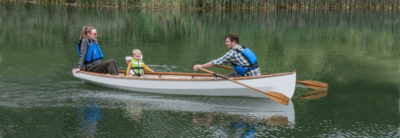


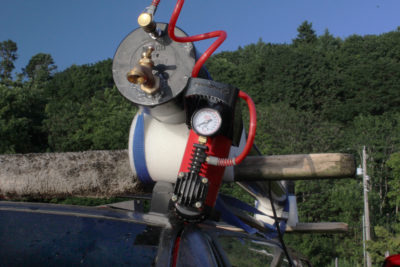
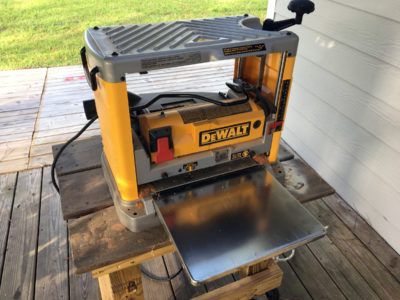
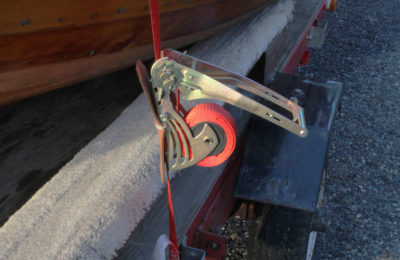
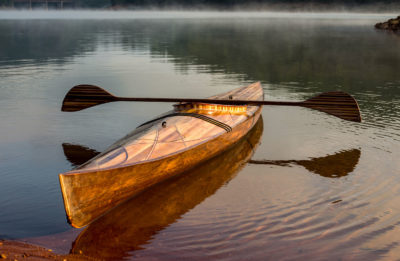
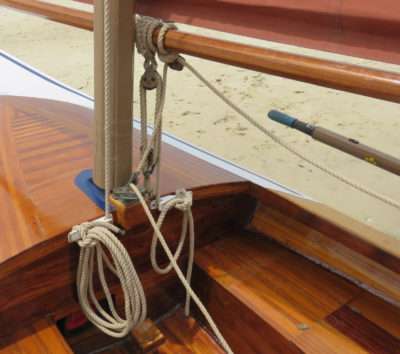
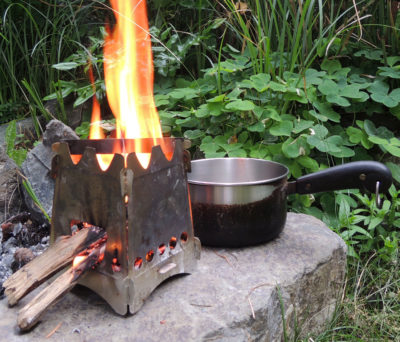
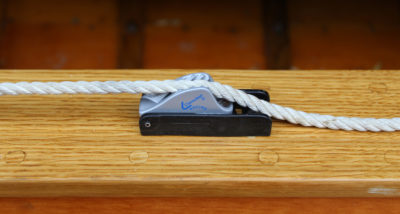
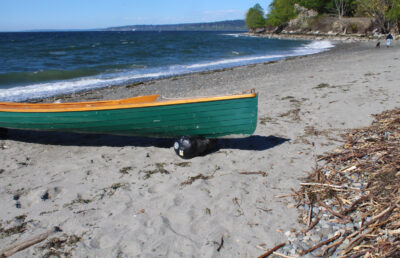
I’ve had the earlier model #733 for many years and have been very happy with it. Has two blades instead of the three on one reviewed. One modification I made was adding a deck and casters to the underside: a lot easier to roll it into a corner when not in use and position wherever appropriate when it’s needed. Another approach by Jim Tolpin ( in Working at Woodworking ) was to mount the planer to a frame which could be hung, via block-and-tackle arrangement, to the ceiling of his shop.
I have the 735, my second one. Works great.
I have been looking at these and always had questions about how long the knives last. Thank you for the information!
With long heavy planking we have supported the plank in various places and let the planer run itself down the plank. No heave lifting, no long tables, just takes 2 or 3 people to move the supports around while the planer travels down the length of the plank.
I’ve owned the 734 for about 2 years, mine throws the breaker sometimes on start up but I’ve put a new breaker in and that fixed the problem. I’ve planed soft maple, cherry, walnut, and poplar with no problems.
For the money, these are great planners. I’ve reversed the knives after about 2 years of use. When I buy new knives, I’m looking at the Infinity Tool knives.